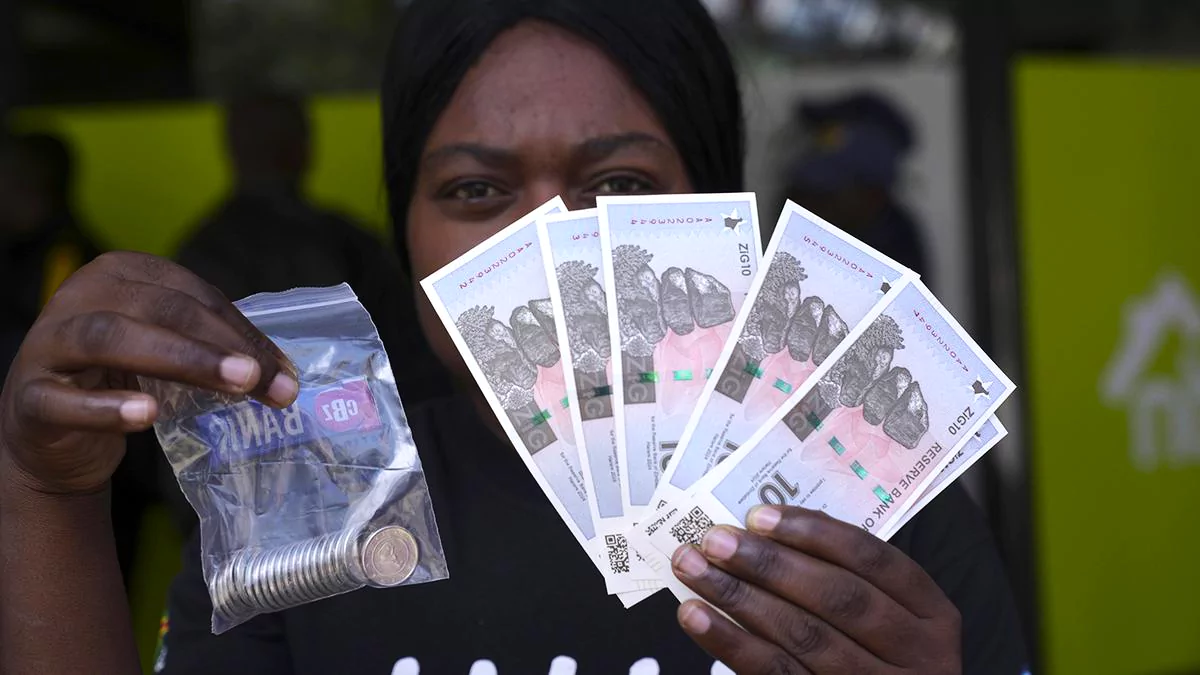Context
In April 2024, Zimbabwe rolled out a new gold-backed currency called the ZiG, or Zimbabwe Gold, in an effort to mitigate the currency instability and hyperinflation that has plagued the country for decades.
- The introduction of the world’s newest currency in April inspired a reggae artist to record a song praising the ZiG, or Zimbabwe Gold.
- Reggae is a music genre that originated in Jamaica in the late 1960s. The term also denotes the modern popular music of Jamaica and its diaspora. It usually relates news, social gossip, and political commentary.
- In 2018, UNESCO, the world body’s cultural and scientific agency, added Reggae to its collection of “intangible cultural heritage” deemed worthy of protection and promotion.
|
About Zimbabwe’s new gold-backed currency

- Refers: The ZiG is the sixth currency Zimbabwe has used since the 2009 collapse of the Zimbabwe dollar amid hyperinflation of 5 billion percent, one of the world’s worst currency crashes to date.
- It’s the southern African country’s latest attempt to halt a long-running currency crisis underlining its persistent economic troubles.
- Aim: It aims to provide a stable and reliable foundation for the currency, which is intended to help control inflation, encourage economic growth, restore public trust and reduce dependence on foreign currencies.
- The introduction of the Zig represents Zimbabwe’s effort to move away from past economic troubles and establish a more secure monetary future.
- Earlier Attempts: The government had previously floated various ideas to replace the Zimbabwe dollar, including introducing gold coins to stem inflation and even trying out a digital currency.
- It is a strategic move towards utilizing the country’s gold reserves to instill confidence in its currency.
- Uniqueness: It is unique because it is backed by gold reserves, meaning its value is supported by the physical gold held by the government.
- In April, the ZiG started trading with an exchange rate of 13.56 to the US dollar, as set by Zimbabwe’s central bank
- Challenges: To establish credibility and stability, ensure acceptance and achieve economic stabilization amid a high inflation, fiscal deficits and external debt.
Enroll now for UPSC Online Course
About Currency:
- Refers: Money in the form of paper or coins, issued by a government and accepted at face value, is known as currency. It serves as a means of exchanging commodities and services.
- In bartering, goods and services were exchanged directly for other goods and services.
- Currency has replaced bartering as the primary means of exchanging goods and services in the modern world.
- First Known Form of Currency: The Mesopotamian shekel was the first known form of currency. It was made about 5,000 years ago. Between 650 and 600 B.C., Lydian and Ionian aristocrats paid their soldiers with stamped silver and gold coins in Asia Minor.
|
![]() 27 May 2024
27 May 2024

